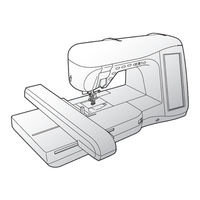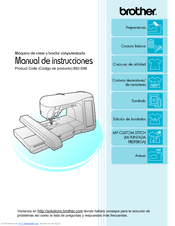Brother 882-S96 Manuals
Manuals and User Guides for Brother 882-S96. We have 2 Brother 882-S96 manuals available for free PDF download: Operation Manual, Manual De Instrucciones
Brother 882-S96 Operation Manual (252 pages)
Computerized Sewing and Embroidery Machine
Brand: Brother
|
Category: Sewing Machine
|
Size: 18.41 MB
Table of Contents
-
-
-
Lcd Screen21
-
-
Sewing50
-
-
-
-
Dart Seam69
-
Gathering69
-
Pintuck71
-
-
Overcasting74
-
Overcasting75
-
Quilting79
-
Appliqué85
-
Fagoting88
-
Heirloom90
-
Darning98
-
Bar Tacks100
-
Button Sewing102
-
Eyelet104
-
Zipper Insertion106
-
Centered Zipper106
-
-
-
-
Basic Sewing114
-
-
-
-
-
-
Key Functions149
-
-
-
-
-
Editing Patterns193
-
Key Functions194
-
After Editing206
-
-
-
Troubleshooting226
-
Error Messages229
-
Alarm Sounds234
-
Specifications235
-
Index246
Advertisement
(Spanish) Brother 882-S96 Manual De Instrucciones (252 pages)
Users Manual - Spanish
Brand: Brother
|
Category: Sewing Machine
|
Size: 8.32 MB
Table of Contents
-
Máquina13
-
Opciones18
-
Pantalla Lcd21
-
Costura50
-
Hilvanado68
-
Fruncidos69
-
Doblez71
-
Sobrehilado74
-
Sobrehilado75
-
Acolchado79
-
Remiendos80
-
Acolchado80
-
Aplicaciones81
-
Aplicaciones85
-
Vainicas88
-
Zurcidos98
-
Barras De Remate100
-
Calado104
-
De Caracteres109
-
Costura Básica114
-
Costura Continua119
-
Más Ejemplos127
-
Enhebrado Manual160
-
Giro Del Patrón173
-
Máquina182
-
Giro Del Patrón195
-
Capítulo 8 Anexo221
-
Especificaciones235
-
Índice246

